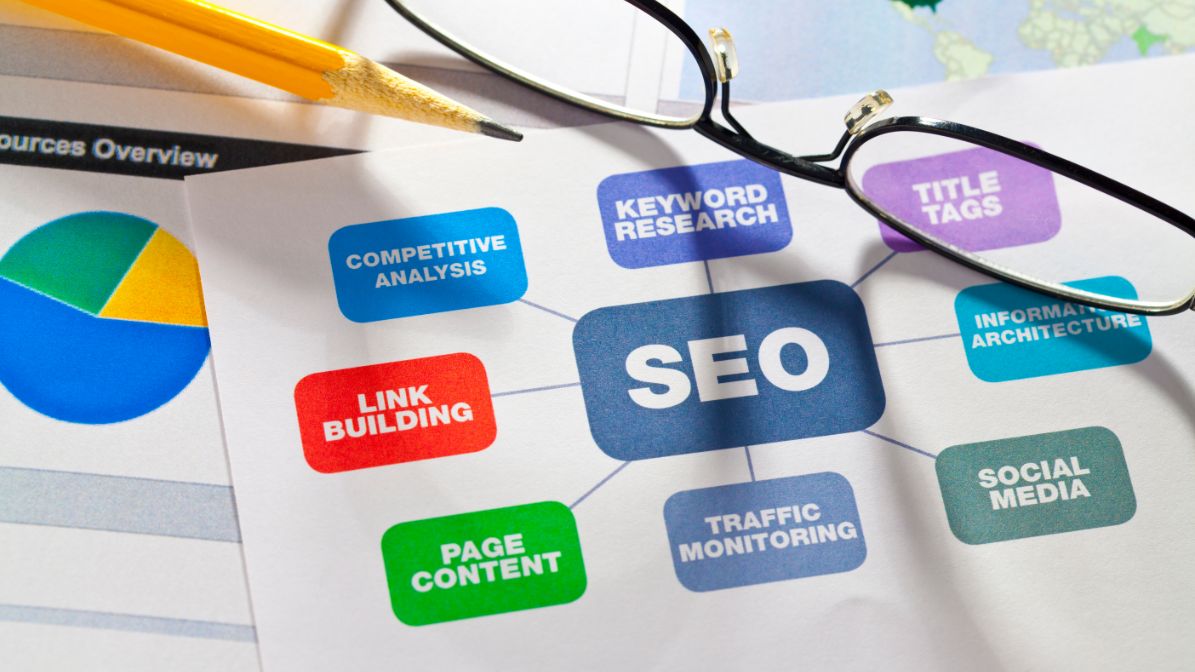No products in the cart.
Digital Marketing, SEO
Mastering Digital Presence: The 8 Essential On-Page SEO Factors You Should Know
The world of digital marketing is incredibly vast and complex. There are many moving parts to consider, but one of the most critical aspects every online business owner, marketer, and SEO enthusiast should master is on-page SEO. Despite its importance, many overlook this facet of search engine optimization. It can significantly increase your website’s visibility and rankings in search engine results if done correctly.
On-page SEO isn’t just about sprinkling keywords throughout your content. It’s about crafting high-quality, relevant, and informative content that provides value to your audience while making it easy for search engines to understand and index your pages.
As a professional in the digital marketing field, I’ve seen firsthand how the power of on-page SEO can transform a business’s online presence. In this article, I’ll share my insight into the essentials of on-page SEO and how you can use it to optimize your website effectively.
Understanding What is On-Page SEO
Before delving into the crux of the matter, it’s essential to understand what on-page SEO is. On-page SEO, or on-site SEO, refers to optimizing individual web pages to rank higher and earn more relevant traffic in search engines. This includes optimizing a page’s content and HTML source code, as opposed to off-page SEO, which focuses on links and other external signals.
On-page SEO encompasses keyword usage and the site structure, meta tags, URL structure, and much more. It’s all about making your website search engine user-friendly, ensuring that both search engines and your audience can find and understand your content.
The ultimate goal of on-page SEO is to speak the ‘language’ of the search engines without sacrificing the user experience. The more effectively you can communicate with search engines, the better your chances of achieving higher rankings and reaching more of your target audience.
The Importance of On-Page SEO
Why is on-page SEO so crucial in the digital marketing landscape? Well, on-page SEO is one of the few areas over which you have complete control in SEO. You can’t control who links to you or how search engine algorithms will change, but you can manage your website’s content and structure.
On-page SEO is essential because it helps search engines understand your website and its content and identify whether it is relevant to a searcher’s query. As search engines become more updated, there is a greater focus on relevancy and semantics in search engine results pages (SERPs).
Moreover, effective on-page SEO improves your website’s readability, making it easier for users to navigate and understand your site. This can increase user engagement, higher time spent on your site, and improve conversion rates.
The 8 Essential On-Page SEO Factors
Now that we’ve covered the basics let’s delve into the eight essential on-page SEO factors you should know. These include:
- Title tags
- Meta descriptions
- Content quality
- Keyword usage and targeting
- Site architecture and navigation
- URL structure
- Internal and external linking
- Mobile-friendliness
Each factor is crucial to your website’s visibility and ranking in search engine results. By optimizing these areas, you can improve your site’s SEO performance and ultimately increase your online presence.
How to optimize your site with On-Page SEO
Optimizing your site with on-page SEO involves several steps. First, you must conduct keyword research to identify the keywords and phrases your target audience uses when searching for your products or services. Once you have a list of potential keywords, you can optimize your website.
Begin by including keywords in strategic places, such as title tags, meta descriptions, and content. However, be careful not to overdo it. Keyword stuffing can lead to penalties from search engines.
Next, focus on improving your site’s architecture. Make sure your website is easy to navigate, with a clear and logical structure. This enhances user experience and makes it easier for search engines to crawl your site.
Finally, ensure your website is mobile-friendly. With more and more people using their mobile devices to browse the internet, having a mobile-friendly site is no longer optional – it’s a necessity.
On-Page SEO checklist for website optimization
To help you optimize your website effectively, I’ve put together an on-page SEO checklist:
- Use SEO-friendly URLs: Keep your URLs short, simple, and keyword-rich.
- Start your title with a keyword: Your title tag is one of the most important on-page SEO factors. Make sure it’s compelling and includes your target keyword.
- Add modifiers to your title: Words like “best,” “guide,” “2022”, and “review” can help you rank for long-tail versions of your target keyword.
- Use your keyword in the first 100 words: Make sure your keyword appears early in your content.
- Use outbound links: Linking to authoritative sites can help improve your site’s relevancy and credibility.
- Use internal links: Linking to your pages can help spread link equity throughout your site.
- Optimize your images: Use descriptive file names and alt text for your ideas, and ensure they’re compressed for faster loading times.
- Use responsive design: Ensure your website looks and performs well on all devices.
This checklist is not exhaustive but is a great starting point for improving your on-page SEO.

Mistakes to Avoid in On-Page SEO
As with any aspect of digital marketing, there are common mistakes to avoid in on-page SEO. These include:
- Keyword stuffing: As I’ve mentioned before, overusing your keywords can lead to penalties. Using your keywords naturally and in a way that provides value to your audience is essential.
- Neglecting meta tags: Meta tags are critical in on-page SEO, specifically title tags and meta descriptions. Ensure they’re unique, relevant, and include your target keywords.
- Poor content quality: Content is king in SEO. If your content is thin, unoriginal, or doesn’t provide value to your audience, it won’t rank well, no matter how well it’s optimized.
- Ignoring mobile optimization: With mobile searches surpassing desktop searches, paying attention to mobile optimization can significantly hinder your SEO efforts.
By avoiding these common mistakes, you can ensure your on-page SEO strategy is on the right track.
Tools to help you with On-Page SEO
There are several tools available that can help you with on-page SEO. These include:
- Google Search Console: This free tool from Google provides a wealth of information about your site’s performance in Google search, including which keywords your site is ranking for, how many clicks your site is receiving, and any crawl errors that may be affecting your site’s performance.
- SEMrush: This comprehensive SEO tool provides keyword research, competitor analysis, and on-page SEO suggestions to help you optimize your site.
- Yoast SEO: This WordPress plugin makes optimizing your site’s meta tags easy, creating SEO-friendly content, and more.
- Screaming Frog: This SEO spider tool allows you to crawl your website and find any technical issues impacting your SEO.
By leveraging these tools, you can gain valuable insights into your website’s performance and identify areas for improvement.
Case studies of effective On-Page SEO strategies
To illustrate the power of on-page SEO, let’s look at a few case studies of businesses that have successfully used on-page SEO to improve their online presence.
For instance, HubSpot, a leading marketing software company, increased organic traffic by 50% through a comprehensive on-page SEO strategy that included updating and optimizing old blog posts.
Another example is Backlinko, an SEO training company, which increased its search traffic by 110% in just 14 days by implementing a content upgrade strategy, which involved adding more relevant and comprehensive content to existing posts.
These case studies demonstrate that you can significantly improve your website’s visibility and traffic with a strategic and well-executed on-page SEO plan.
Mastering your digital presence with On-Page SEO
Mastering on-page SEO might seem daunting, but it’s entirely achievable with the proper knowledge and tools. Remember, on-page SEO isn’t just about pleasing search engines – it’s about providing valuable and relevant content to your audience.
By focusing on the eight essential on-page SEO factors outlined in this article, you can start to improve your website’s visibility and rankings, attract more relevant traffic, and, ultimately, enhance your digital presence.
Remember, SEO is a long-term game, and results won’t come overnight. Keep learning, testing, and optimizing, and you’ll see improvements. Happy optimizing!


